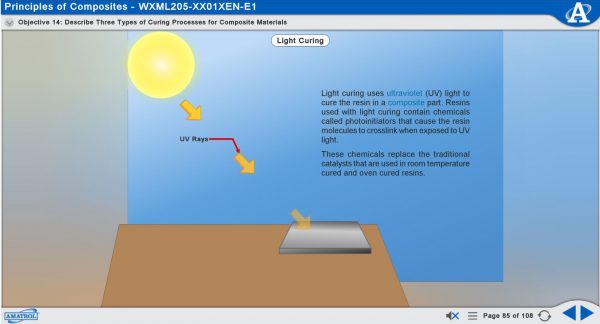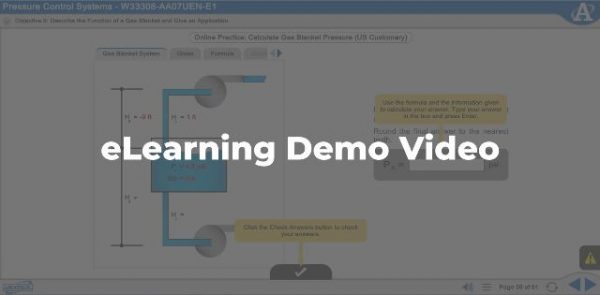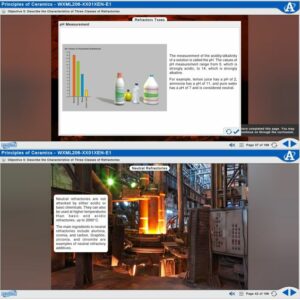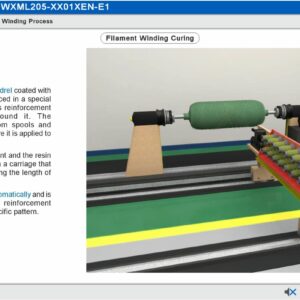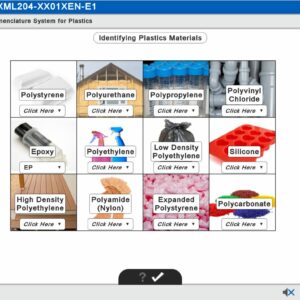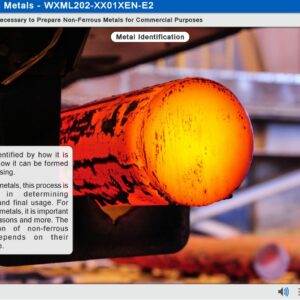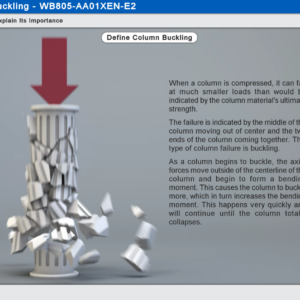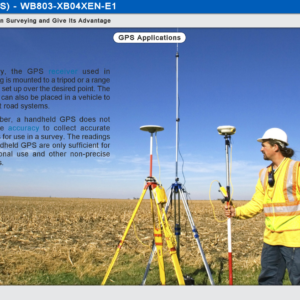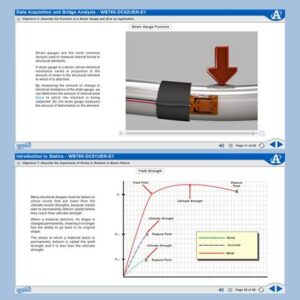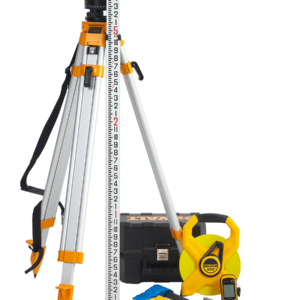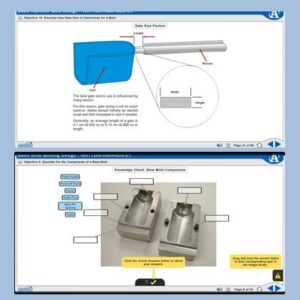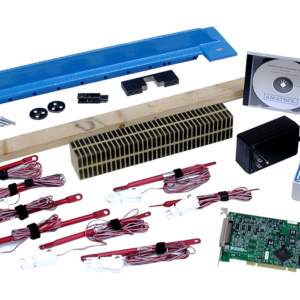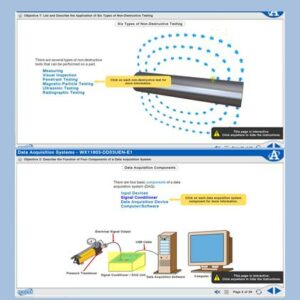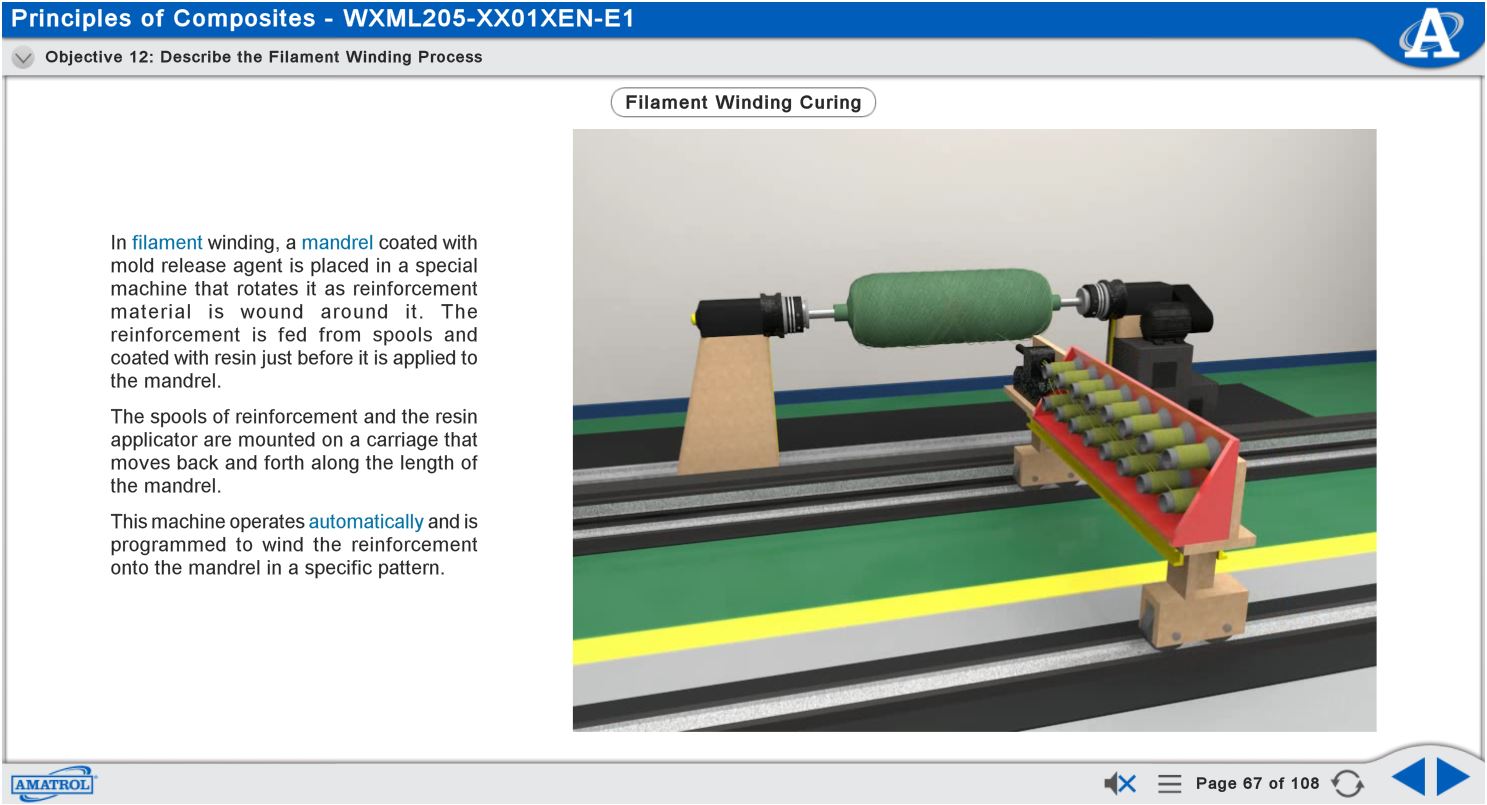
Amatrol's Principles of Composites eLearning course (MXML205) introduces the importance, properties, processes, and skills of working with composites. These concepts include the types of materials that make up a composite, the history of composites, mechanical properties, thermal properties, electrical properties, environmental properties, the many types of composite manufacturing processes, and environmental considerations for composites including how the composite industry is reducing its impact on the environment today. This course encompasses knowledge needed in today’s world of manufacturing processes and materials.



